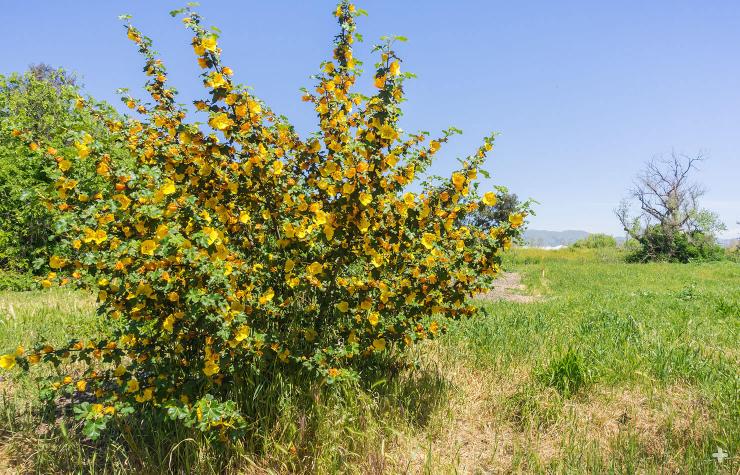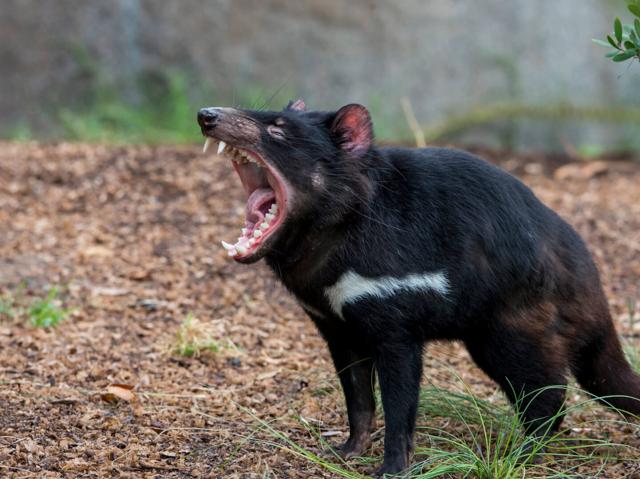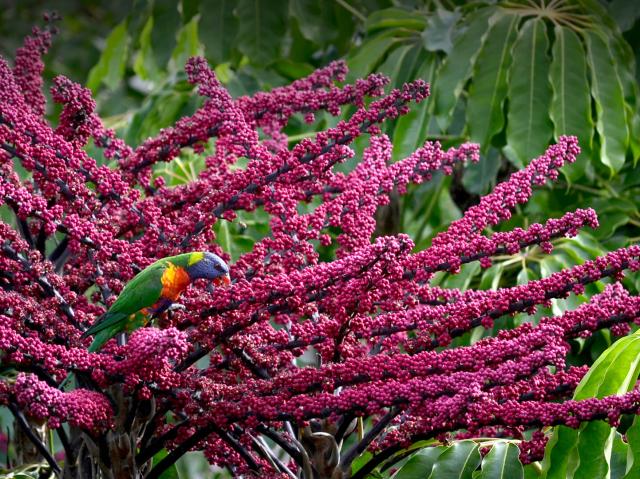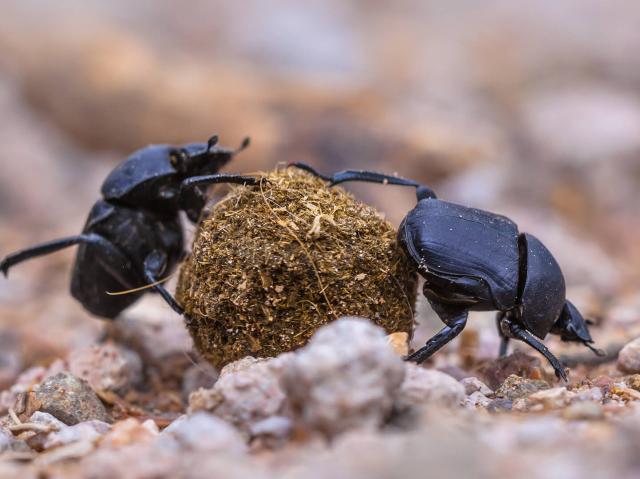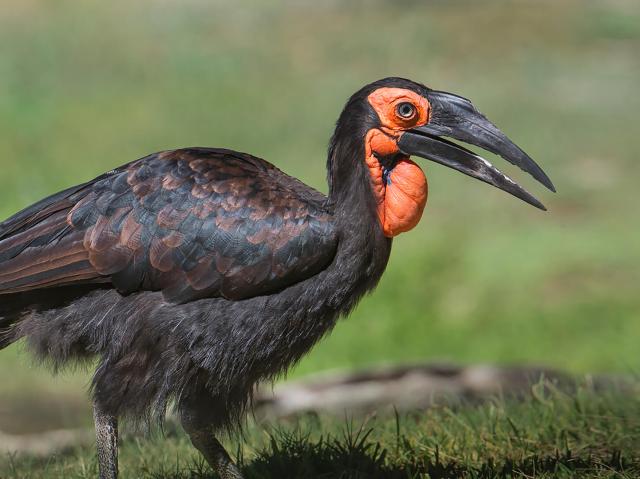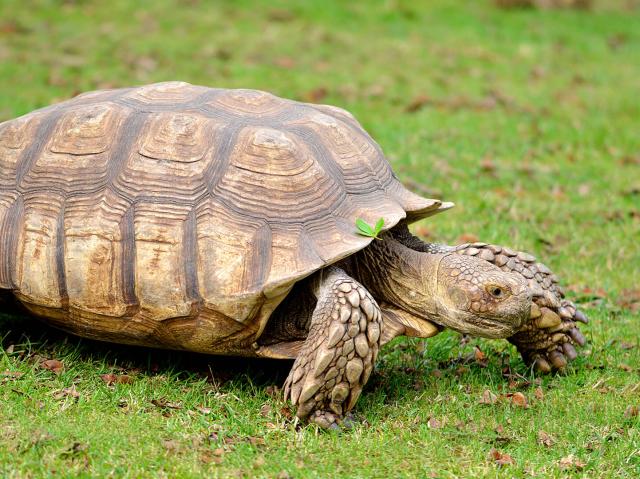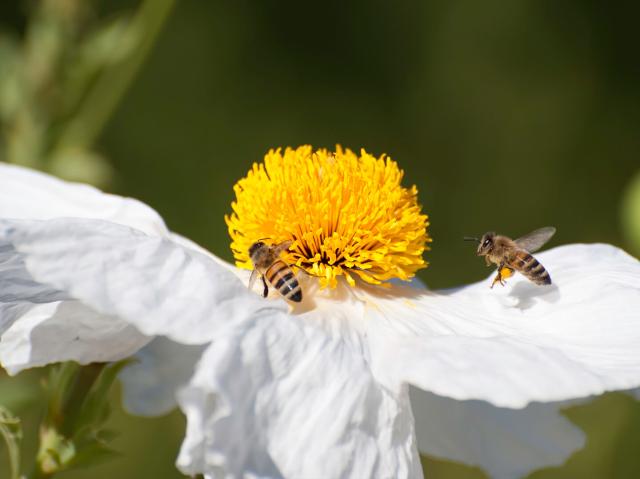
Flannelbush

- DIVISION: Tracheophyta
- CLASS: Magnoliopsida
- ORDER: Malvales
- FAMILY: Malvaceae
- GENUS: Fremontodendron
- SPECIES: californicum, decumbens, and mexicanum

OVERVIEW
Take a springtime stroll through woodland or chaparral in California’s coastal ranges or Sierras, and you may run across this sprawling shrub in glorious bloom. It grows in chaparral; oak, pine, and juniper woodlands; and pine forests, and can sprawl to 20 feet (6 meters) tall and wide. Covered with flat, yellow or orange flowers, it buzzes with the activity of native moths, butterflies, bees, flower beetles, and hummingbirds. California flannelbush F. californicum is native to sunny, dry, rocky slopes, mostly between 3,000 and 6,000 feet (about 900 to 1,800 meters).
The other two flannelbush species are rare plants with more restricted ranges. The only place to see wild-growing Pine Hill flannelbush F. decumbens is within about 2 miles (1.2 kilometers) of Pine Hill in El Dorado County, California, where it grows atop rocky ridges and outcroppings in chaparral and black oak woodlands. The 4-foot (1.2-meter) shrub starts budding in late winter, and opens its orange flowers in spring. Mexican flannelbush F. mexicanum grows in only two populations in Baja California, Mexico and three populations in roughly 11 square miles of San Diego County. It grows in dry canyons and sandy washes of Tecate cypress woodland and chaparral—fire-prone habitat.
CHARACTERISTICS
Growing by leaps and bounds, a California flannelbush (the largest of the three species) can reach 20 feet (6 meters) in just five years. Its form can be upright, mounding, rounded, or spreading. The tiny, bristly hairs that cover the dark green foliage and give leaves a grayish, fuzzy, flannel-like appearance help the plant conserve water by shading the stem and leaves. In spring and summer, abundant, three-inch, yellow flowers cover the shrub, growing profusely on branchlets in long sprays. Seedpods, which hold hard-coated, black seeds, dry and stay on the plant until fall or winter. As seasonal rains begin, seed pods release their treasures.
CULTIVATION
This bloomer needs room to grow, but it’s perfect for dry, sunny slopes and hillsides with sufficient space, especially when grown alongside other drought-adapted California natives like oaks and ceanothus. It grows best in well-draining, coarse soil, but it can tolerate clay, too. Like most California chaparral plants, flannelbush is drought tolerant. If you plant it in fall, it will get established during the rainy season and will need little to no supplemental water. In fact, in the summertime, it’s downright fussy about staying dry. The fuzzy hairs that protect flannelbush from hot, dry conditions can irritate skin, so gloves, long sleeves, and eye protection are a good idea.
CONSERVATION
Urbanization has resulted in habitat loss and fragmentation for flannelbush species. It’s also the reason behind the alteration of natural fire cycles for which flannelbush are adapted. Climate change is a danger, too. Pine Hill flannelbush and Mexican flannelbush are rare, endangered species that are protected by the state of California and the federal government. Mexican flannelbush is popular as a landscaping hybrid with California flannelbush or Pine Hill flannelbush, but hybridization of horticultural stock with native Mexican flannelbush is a risk, too.

San Diego Zoo Wildlife Alliance (SDZWA) conservation scientists have collected, dried, and frozen seed from all three US populations of Mexican flannelbush for the Native Plant Seed Bank. The SDZWA Native Plant Seed Bank conserves invaluable genetic material, which provides insurance against catastrophic loss in the wild, protects against erosion of genetic diversity by habitat fragmentation and loss, offers material for research into germination cues and propagation, and provides material for restoration. The plant conservation team not only carefully collects seed and curates the Native Plant Seed Bank, but also conducts work to develop dormancy-breaking protocols that ensure seeds can be grown when needed.
By supporting San Diego Zoo Wildlife Alliance, you are our ally in saving and protecting wildlife worldwide.
NAME
The genus Fremontodendron is named in honor of California explorer, soldier, and politician John C. Fremont, one of the first two US senators from California, and the first presidential candidate of the new Republican Party. The last part of the genus name, dendron, comes from the Greek word for “tree.” California flannelbush is sometimes called California slippery elm or mountain leatherwood.
IT’S THE LAW
Some California native plants are protected by law. California laws that protect native native plants include the California Endangered Species Act, the Native Plant Protection Act, the California Environmental Quality Act, the Natural Community Conservation Planning Act, and the California Desert Native Plants Act.
FIRE
Like many native plants of the region, these evergreen perennials are adapted for surviving periodic natural fires, but fire regime alteration is a risk.


